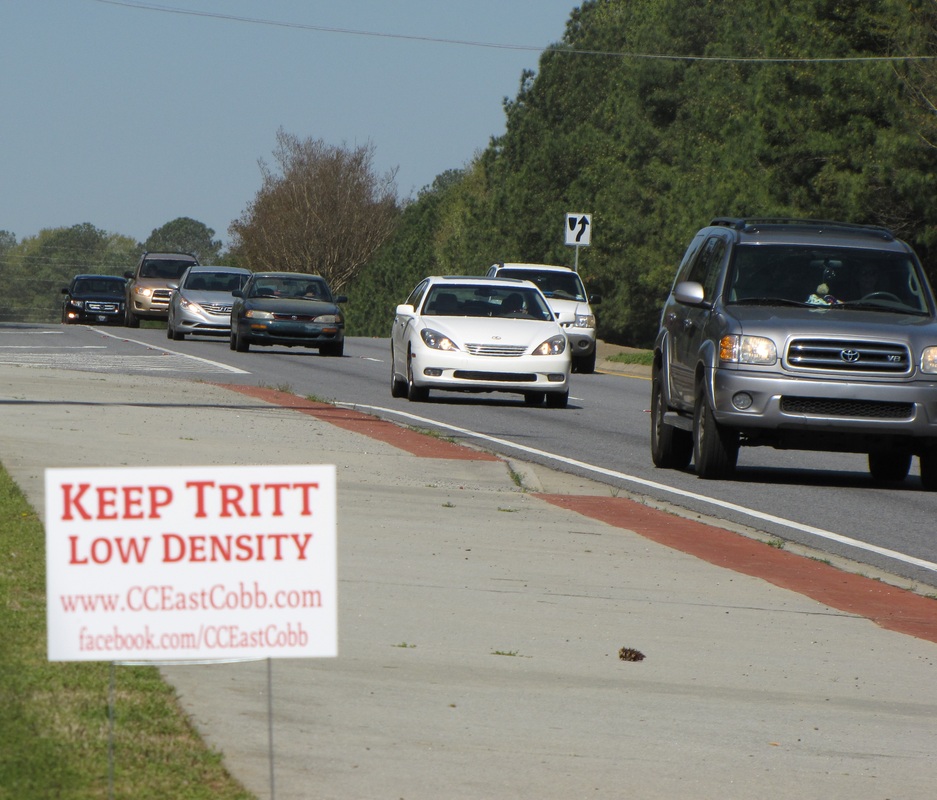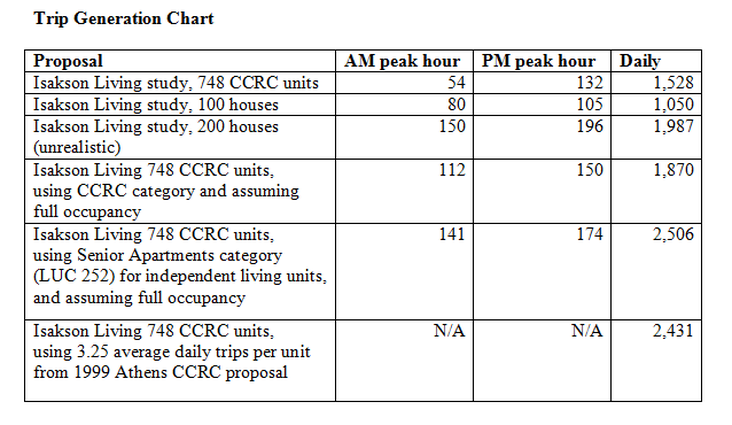| Isakson Living conducted a traffic study for their initial proposal for a 987-unit retirement community on the Tritt property, next to East Cobb Park. That study (click here) includes traffic projections. These projections were recently updated to reflect the 748 units in the latest proposal. These projections also compare traffic to a 100 and 200 house subdivision on the same land (although we have outlined why 200 houses is highly unrealistic). |
To estimate traffic, the Institute of Transportation Engineers (ITE) Trip Generation Manual, 9th edition was used. This manual has a number of land use categories - single family homes, senior adult housing, etc. - with traffic multipliers and/or formulas for each.
| A subdivision would comprise the single family homes category, and this has two techniques to calculate traffic - simple multipliers and more complex formulas. In this case, the formulas show more traffic, so Isakson Living used the formulas to estimate the traffic produced by a 100 and 200 house subdivision. This is a conservative way to calculate traffic, even though 200 houses is not a viable scenario. |
The ITE manual has land use categories for CCRC, which is what Isakson Living's proposal is, yet they did not use the CCRC category. We question why the CCRC category was not used. ITE explicitly created this category for CCRCs, and conducted multiple traffic studies to come up with traffic multipliers. If Isakson Living had used the CCRC category, it would have shown significantly more traffic, especially during the peak AM and PM rush hours.
Rather, Isakson Living broke down their proposal into its 3 constituent parts - Independent Living, Assisted Living and Nursing - and assigned an ITE category to each to estimate traffic. 87% of the units are Independent Living, and we question the choice of the ITE category for these units, something called a "Congregate Care Facility", which has very low traffic numbers, because vehicle ownership by the residents in that category is very low. Isakson Living's initial traffic study quotes the ITE manual, which states "vehicle ownership levels were very low at congregate care facilities". Would vehicle ownership be very low at Isakson Living East Cobb? Lets look at the facts.
|
We disagree with the decision to not use the CCRC traffic category, and to split the CCRC into parts, but we especially disagree with the decision to use the "Congregate Care Facility" category, where the resident own few cars, to represent the independent living units. A far more appropriate ITE category would be Senior Apartments, which is what these independent living units are. The Senior Apartments category shows far more traffic for this proposal.
Isakson Living's 1999 proposal for a 456 unit CCRC in Athens, GA (which was defeated) was projected to generate 1,481 daily trips, according to the Athens media. That is 3.25 daily trips per unit, as compared to just 2.04 daily trips for the Isakson Living East Cobb proposal. Have seniors' driving habits changed that much in 15 years? If anything, seniors are living longer, healthier lives, and driving for more of their lives. The Athens traffic number appear to be much more realistic.




 RSS Feed
RSS Feed